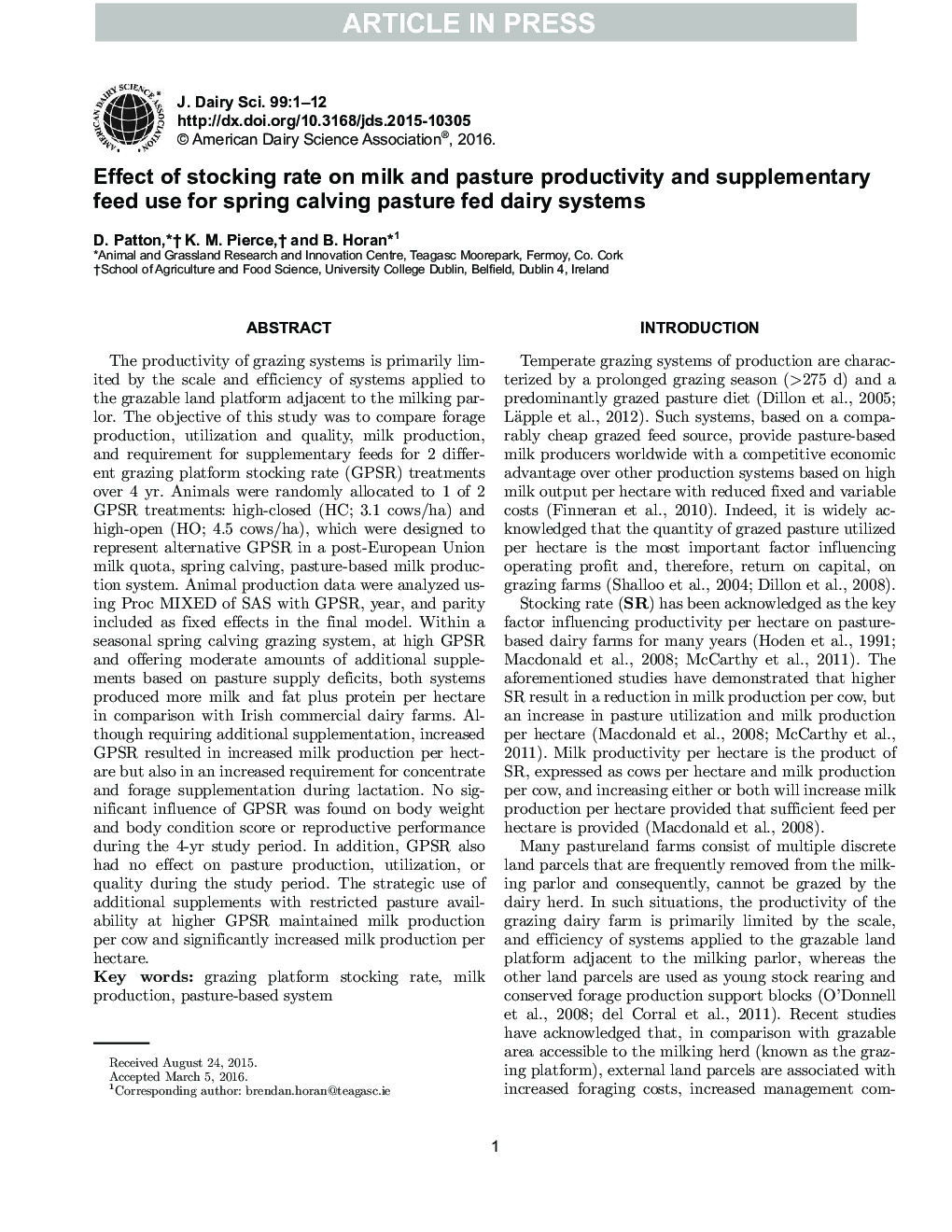| Article ID | Journal | Published Year | Pages | File Type |
|---|---|---|---|---|
| 10973686 | Journal of Dairy Science | 2016 | 12 Pages |
Abstract
The productivity of grazing systems is primarily limited by the scale and efficiency of systems applied to the grazable land platform adjacent to the milking parlor. The objective of this study was to compare forage production, utilization and quality, milk production, and requirement for supplementary feeds for 2 different grazing platform stocking rate (GPSR) treatments over 4 yr. Animals were randomly allocated to 1 of 2 GPSR treatments: high-closed (HC; 3.1 cows/ha) and high-open (HO; 4.5 cows/ha), which were designed to represent alternative GPSR in a post-European Union milk quota, spring calving, pasture-based milk production system. Animal production data were analyzed using Proc MIXED of SAS with GPSR, year, and parity included as fixed effects in the final model. Within a seasonal spring calving grazing system, at high GPSR and offering moderate amounts of additional supplements based on pasture supply deficits, both systems produced more milk and fat plus protein per hectare in comparison with Irish commercial dairy farms. Although requiring additional supplementation, increased GPSR resulted in increased milk production per hectare but also in an increased requirement for concentrate and forage supplementation during lactation. No significant influence of GPSR was found on body weight and body condition score or reproductive performance during the 4-yr study period. In addition, GPSR also had no effect on pasture production, utilization, or quality during the study period. The strategic use of additional supplements with restricted pasture availability at higher GPSR maintained milk production per cow and significantly increased milk production per hectare.
Keywords
Related Topics
Life Sciences
Agricultural and Biological Sciences
Animal Science and Zoology
Authors
D. Patton, K.M. Pierce, B. Horan,
